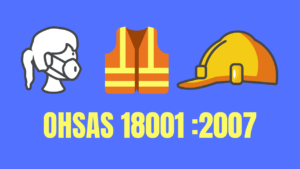In this post you would learn about 7 wastes of lean manufacturing,example of each waste and ways to reduce these wastes.So keep reading.
Table of Contents
WHAT IS WASTE ?
Waste(also called as MUDA in japanese language) is any organizations biggest and most dangerous enemy.
What do you do with your enemy?Pull it out from the root.So should be done to manufacturing waste.
Complete part making process can be divided in three components as follows :
- Actual work : Refers to the work which actual contributes in shaping product to its desirable form.For example,heating pot filled with water and eggs,to boil eggs.Its the actual work required to convert raw hard egg to soft boiled egg.
- Auxiliary work : Refers to work that supports actual work.It usually occurs before or after work.
- Waste : It’s the non-value adding part of the process which can be eliminated.Good test to find waste is,imagine if you stop doing this work,there would be no adverse effect on the product.
Let me explain these components of work with the help of an example.
Suppose we are looking at a parts manufacturing process which includes casting,machining and assembly process.
If we do value stream mapping for this process,we could divide it in following stages :
- Waiting in RM store (Waste)
- Casting(Actual Work)
- Transportation(Waste)
- Staging(Waste)
- Setup(Auxiliary Work)
- Machining(Actual Work)
- Inspection(Auxiliary Work)
- Assembly (Actual Work)
- Staging(Waste)
So the purpose here would be to reduce waste as much as possible.Because eliminating stages contributing to waste won’t have any adverse impact on part.
7 TYPES OF WASTE IN LEAN MANUFACTURING
TIMWOOD acronym can be used to remember these 7 types of wastes.(T-Transportation,I-Inventory,M-Motion,W-Waiting,O-Overproduction,O-Overprocessing,D-Defects)
There are 7 type of wastes :
A. Transportation waste
Transportation waste refers to the movement of products in between processes.
For example all the forging is done in one area ,and all the machining is done in another area. So parts have to be transported from forging section to machining section creating transportation waste.
If forging and machining sections are far away,it would lead to high level of transportation waste.
Simple solution to such waste would be to move forging and machining sections closer to each other.
Following are some of the ways to address transportation waste :
- By improving shop floor layout .
- Increasing number of storage location.
- Creating efficient material handling systems
B. Inventory waste
Inventory includes completed or finished stock lying on storage shelves, consuming space and money.
Let me give you an example of inventory waste.
Suppose you went to market,to buy some tomatoes.You were shopping and shopkeeper told you that prices of tomatoes are going to go 1.5X,effective from tomorrow.
To take advantage of current low prices,you bought 3 KG instead of 1 KG.Since tomatoes are perishable item,1.5 KG out of 3 KG got spoiled.Effectively you made a loss.
This is an example of inventory waste.
Following are some of the ways to address Inventory waste :
- You need to implement “just in time” concept of Lean manufacturing.
- Work in small batch sizes.
- Reduce change over time.
C.Motion waste
The best of motion refers to the movement within a particular process rather than movement of material between processes.
Motion waste is,simply put,moving more than necessary when working.
For example,imagine a scenario,where you are setting up a blanking tool on power press.
To setup you need tools.But the problem is you have all your tools kept at different locations.
So you move different directions to get the tools.This is total waste or motion waste to be precise.
To rectify it you can opt for a simple solution.You can put all your tools in one trolley.To make it even better you can put trolley on wheels.This way you can pull the trolley to any location you want.
Following are some of the ways to address Motion waste :
- Redesigning workplace Layout to reduce reorientation of materials.
- Improving ergonomic aspect of work stations.
D. Waiting waste
Waiting refers to idle time between two processes or we can say the time machine has to wait because of problems in interdependent process.
Waiting waste is generally due to unbalanced processes or downtime.But it is not just restricted to these two reasons.Waiting for information from superior to operate is also an example of waiting waste.
Suppose you have 4 close friends(Bob,Shelly,Raj,George),all living in your city.You want to plan for a movie and you want all your close friends to join.
First you called Bob.He confirmed immediately.Then you called Shelly and Raj,they also confirmed immediately.Finally you called George,he said he needs to check with his wife.
Now,you are not able to book tickets as George’s confirmation is pending.
Your desirable output(Booking Tickets) is pending as George haven’t confirmed yet.This is a perfect example of waiting waste.
Following are some of the ways to address Motion waste :
- Balancing operation timings.
- Working in small batch size.
E. Overproduction waste
Over production is producing in surplus amount before it is needed. It results in huge stacks of WIP(Work in progress). overproduction results from efforts to optimise processes in isolated Manner. Extra inventory needs to be transported and stacked in stores, which ends up consuming space and money.
Let me give you an example.
Suppose,you have a party planned.You have guest list of 10 people.But you are not sure how many additional guest(kids,spouse) would each of your guest have?
Rather than asking your guests for exact numbers,you assumed each guest would bring at least one extra guest.You planned food and seating accordingly.
Eventually only 9 of your guests turned up.All the extra food goes to the dustbin.That extra food is an example of overproduction.
Following are some of the ways to address over production waste :
- To work in small batches.
- To implement Pull system, under which produce when it is needed.
- To optimise the overall process rather than individual processes.
F. Over processing waste
Over processing is working on those characteristics of product which are not required by customer.
For example Plating Stainless steel parts. stainless steel doesn’t catch rust so plating it is over processing waste.
Following are some of the ways to address over processing waste :
- setting clear quality acceptance criterias.
- standardizing work procedures.
G. Defects
These are the most visible part of waste. these are the defects produced during manufacturing. defects are one of the major contributor the cost of poor quality.
Defect is something unexpected,or deviation from expected.
For example,you are cooking chapati and you over burned 2 out of 10 you make because you were engaged in TV show while cooking.Now these two chapati’s can’t be eaten,So these would be considered as defective.
These defects could be easily evaded by turning off TV while cooking.
Same is true for many defects we encounter during manufacturing.Most of them are avoidable.
Following are some of the ways to address Defect waste :
- To improve processes.
- Making safety and working on highest defect contributors.
- Employee training
- Making people aware of cost of poor quality.
I hope this was useful.
What example of over processing waste you could think of ?Answer in comments.





Pingback: What is Toolbox Talk? : Explained with tips and examples - Quality Encyclopedia